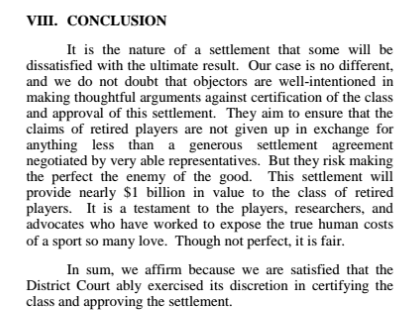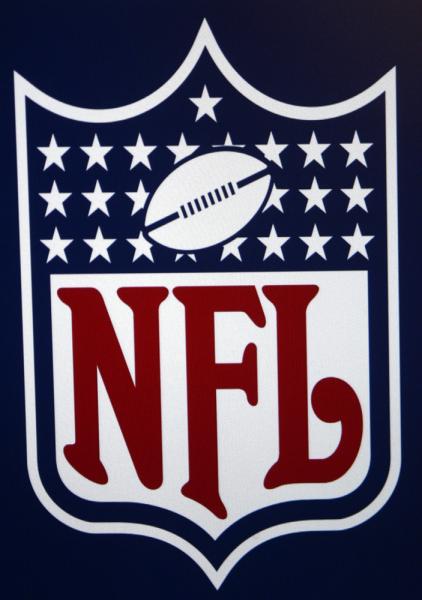For more than 25 years, Terry Beasley has been living with riveting pain and constant headaches, horrendous results of his football-playing past.
At the age of 66, the bed-ridden former NFL player cannot take care of himself, and he's so dependent on his wife to provide for his every need that he objects when she even tries to leave the room. Having suffered an estimated 40 concussions with the San Francisco 49ers, and during his college days at Auburn University, Beasley's headaches are so severe that the former wide receiver is frequently hospitalized.
That's when he's not having seizures.
But beginning in Spring 2017, after years of legal wrangling and uncertainty, Beasley and his wife, Marlene, will receive some relief, financial compensation for the excruciating toll football has taken on them both. That's because on Monday the U.S. Supreme Court decided not to revisit a challenge to the NFL's class-action lawsuit brought by former players, allowing a previous ruling on a negotiated settlement in District Court to stand. The high court's decision, which ends a landmark case that began in July 2011 with a few dozen plaintiffs, allows for payments to start being made to former players.
Not all the affected former players, or their families, agreed with the settlement, which is why the initial ruling was appealed to the U.S. Court of Appeals, and then the Supreme Court. The reason, they say, was because it failed to address those with chronic traumatic encephalopathy, or CTE, a severe brain disease caused by concussions that has been diagnosed in many deceased players. "They also argued the deal unfairly favored currently injured retirees," Reuters reported, "and left thousands of former players who have not yet been diagnosed with neurological diseases without a remedy."
 The deal, which promises to benefit more that 20,000 former NFL players and/or their families, could be worth as much $1 billion in all. And depending on Beasley's official medical diagnosis, his award could be in the hundreds of thousands of dollars, if not the millions.
The deal, which promises to benefit more that 20,000 former NFL players and/or their families, could be worth as much $1 billion in all. And depending on Beasley's official medical diagnosis, his award could be in the hundreds of thousands of dollars, if not the millions.
“He won’t have to worry about his final years,” said Marlene Beasley, referring to the anticipated, life-altering payment, speaking with the Ledger-Inquirer of Columbus, GA. “And it will allow me to get someone to come in here and stay with him if I need to go somewhere and my son is not available. I can get somebody to come in and do things in house I don’t have time to do because I want to stay with him."
The table above right, which is excerpted from the District Court's settlement document, when Judge Anita Brody handed down her decision in April 2015, specifies the sums that are to be paid to injured players based on their level of disability. If Beasley, as well as any other plaintiff, is found to suffer from "Level 1.5 neurocognitive impairment," defined as "early dementia with moderate to severe cognitive decline" then he would be entitled to $1.5 million. If it were Level 2, described as "moderate dementia with severe cognitive decline," the award would be doubled.
With the Supreme Court's decision to let the lower court's ruling stand, beginning in January the NFL, which welcomed the eight-member court's refusal to hear the case, is obligated to make six, $20 million monthly deposits. Meanwhile, the plaintiffs' attorneys must set up a payment mechanism by April, by which the players can use to start filing claims. For those who diagnoses have already been made payments can be issued in a matter of weeks.
 Considering the anguish and despair felt by the players afflicted with CTE -- many of whom committed suicide because they could no longer endure their condition, or sought to spare their loved ones as well -- it's difficult to be fully satisfied with the court's final determination. However, the final verdict does provide essential relief to thousands of retired, battered players, which the 3rd Circuit of the Court of Appeals pointed out when it ruled to uphold the lower court's decision.
Considering the anguish and despair felt by the players afflicted with CTE -- many of whom committed suicide because they could no longer endure their condition, or sought to spare their loved ones as well -- it's difficult to be fully satisfied with the court's final determination. However, the final verdict does provide essential relief to thousands of retired, battered players, which the 3rd Circuit of the Court of Appeals pointed out when it ruled to uphold the lower court's decision.
The objectors, the court concluded at the time, "risk making the perfect the enemy of the good." And with that, the settlement was approved.




